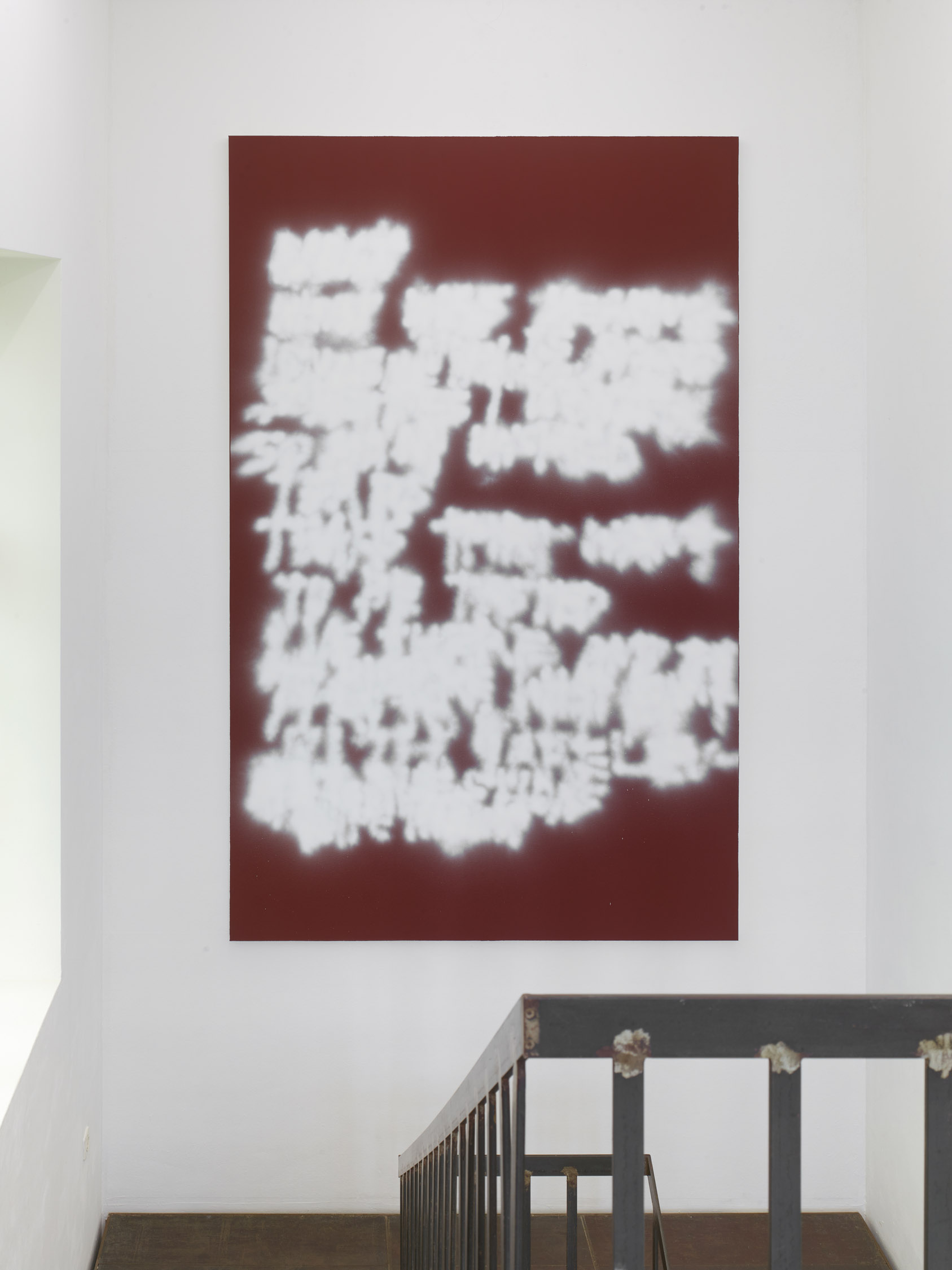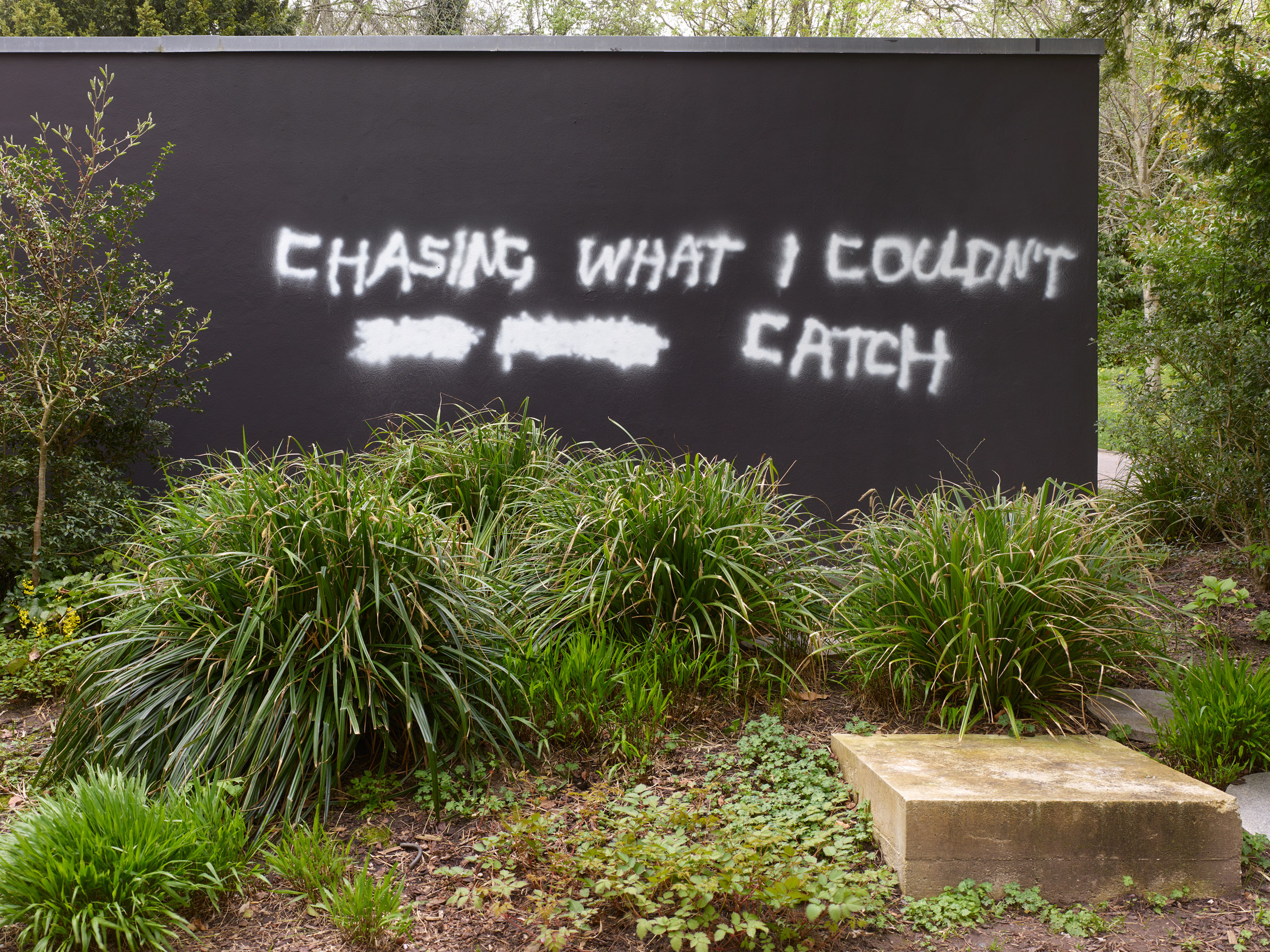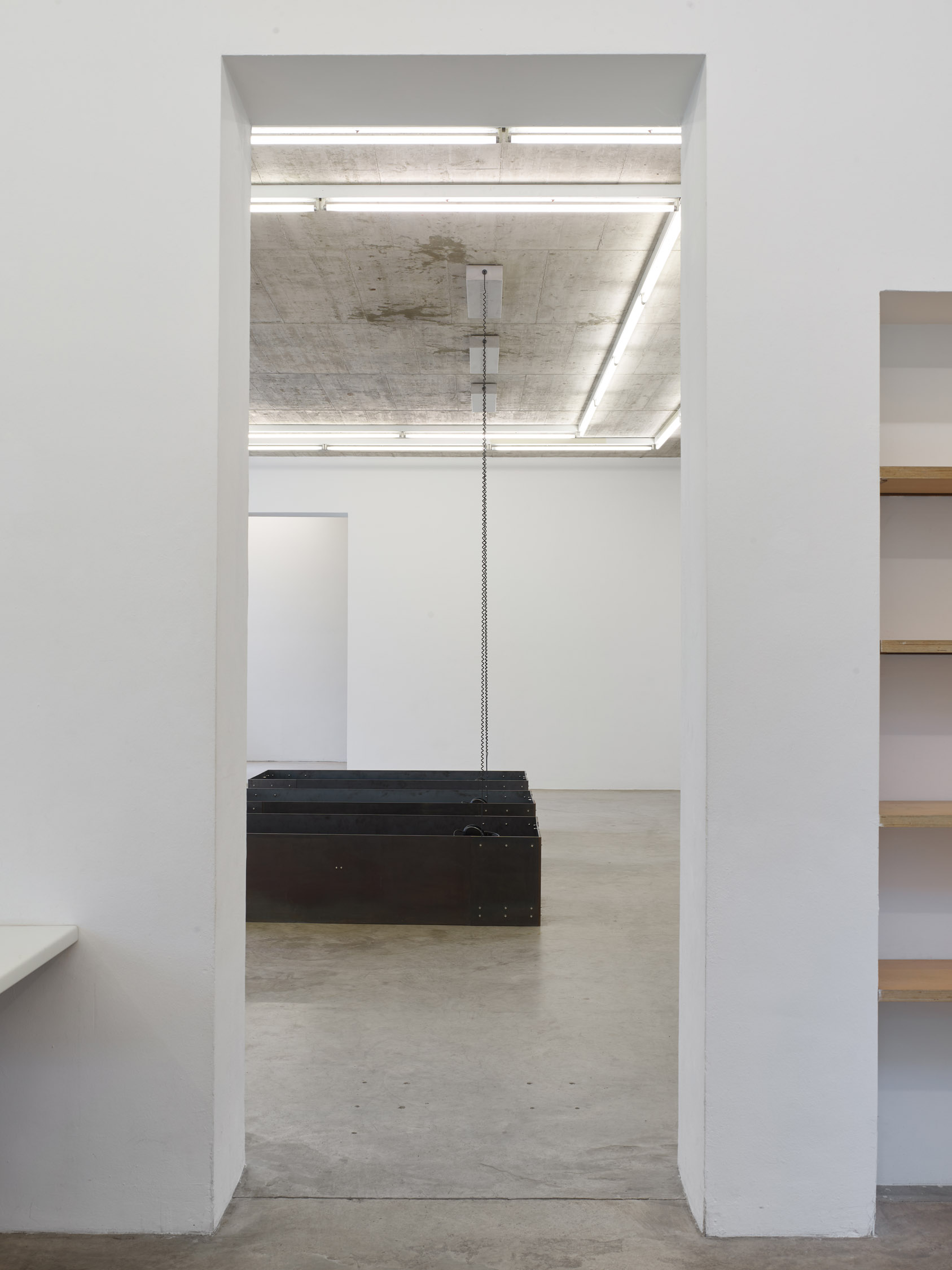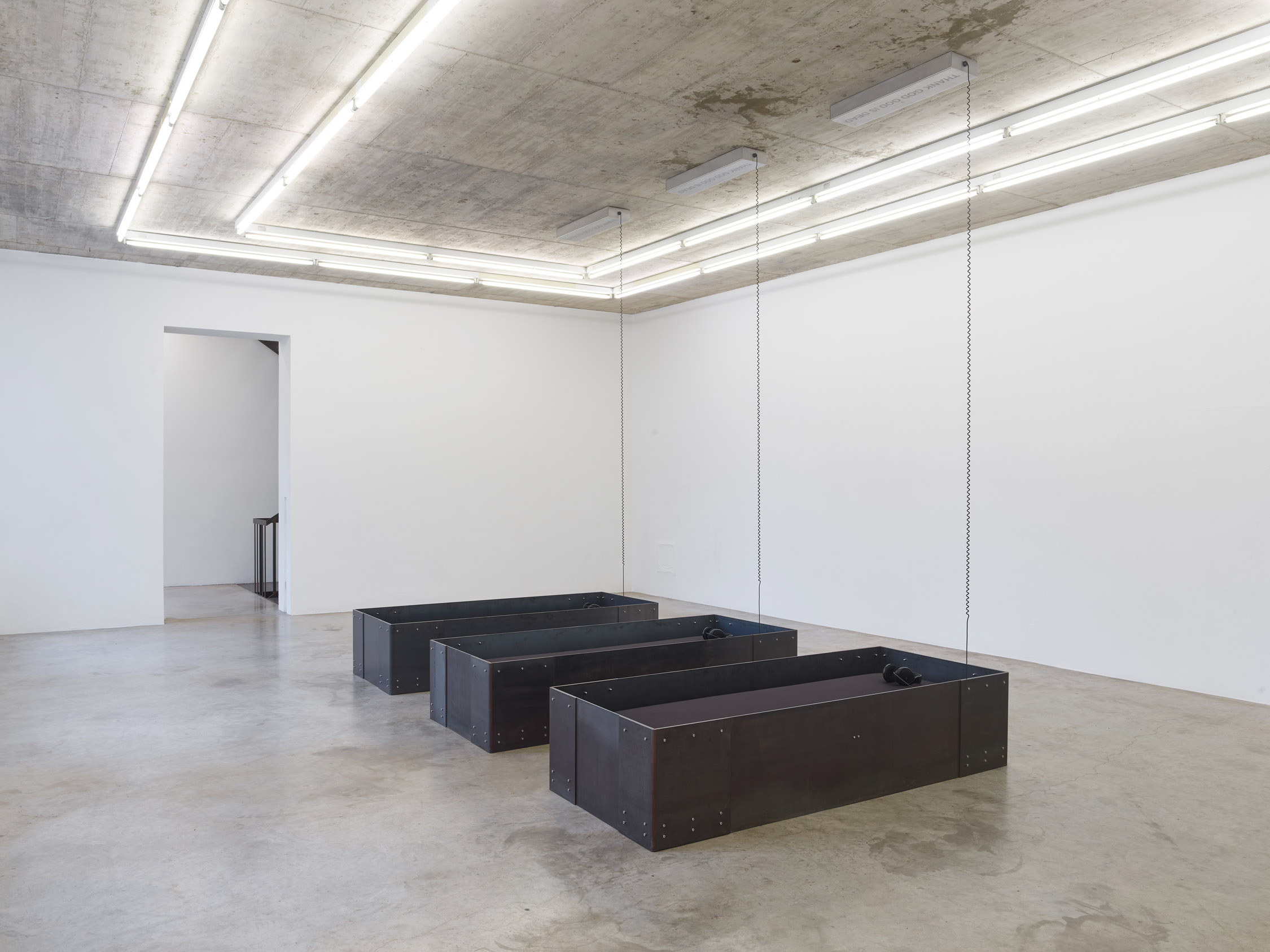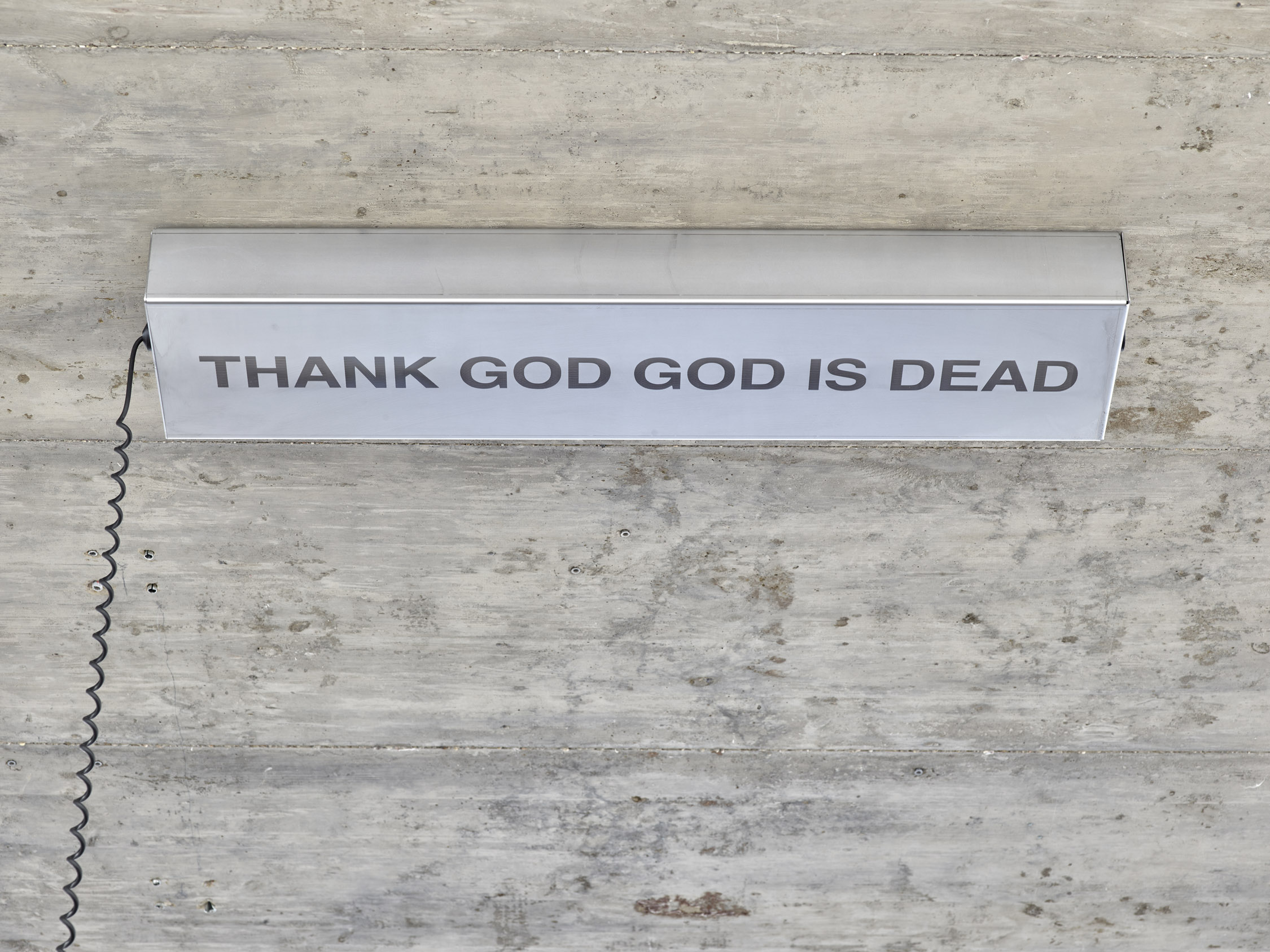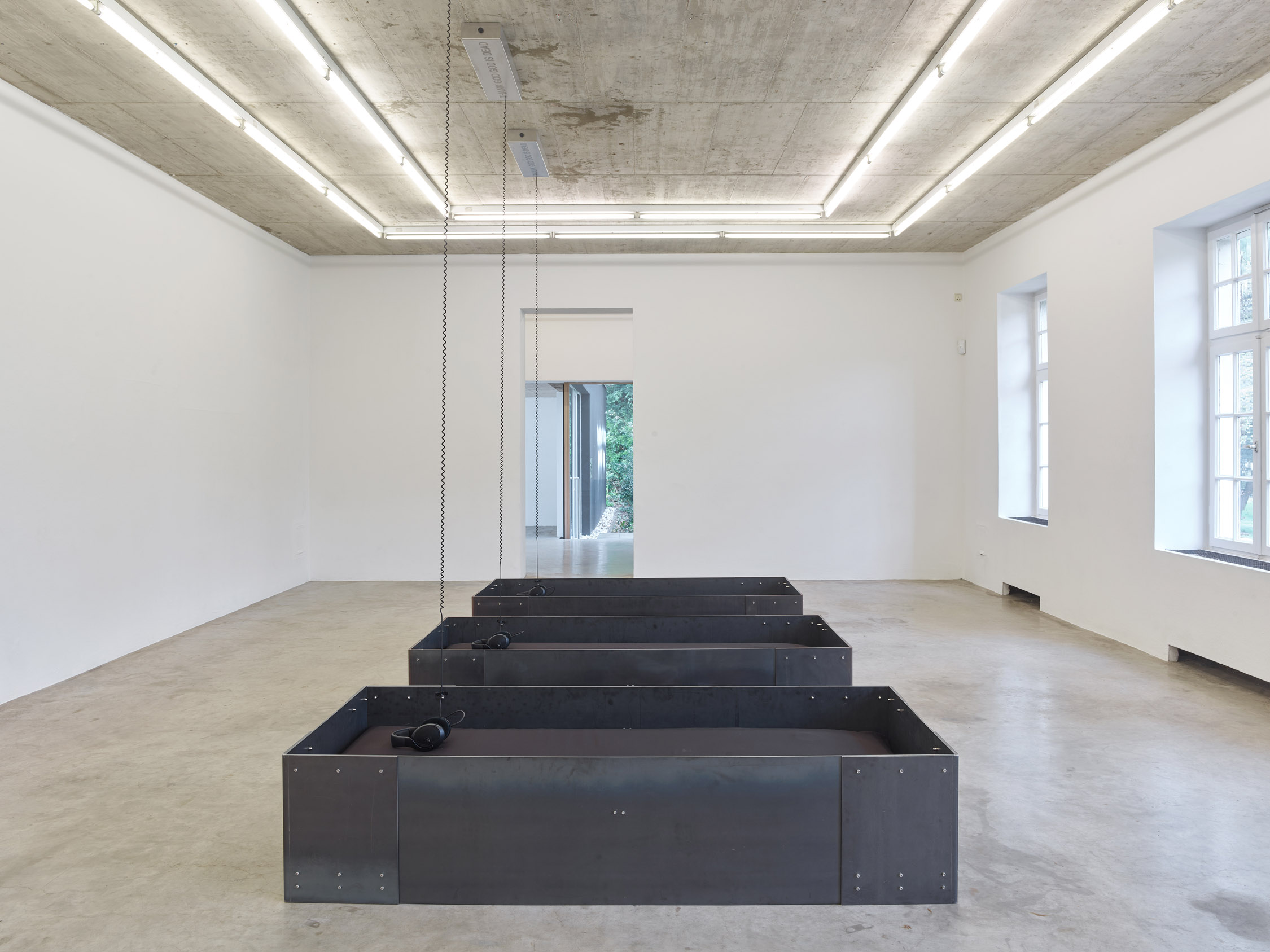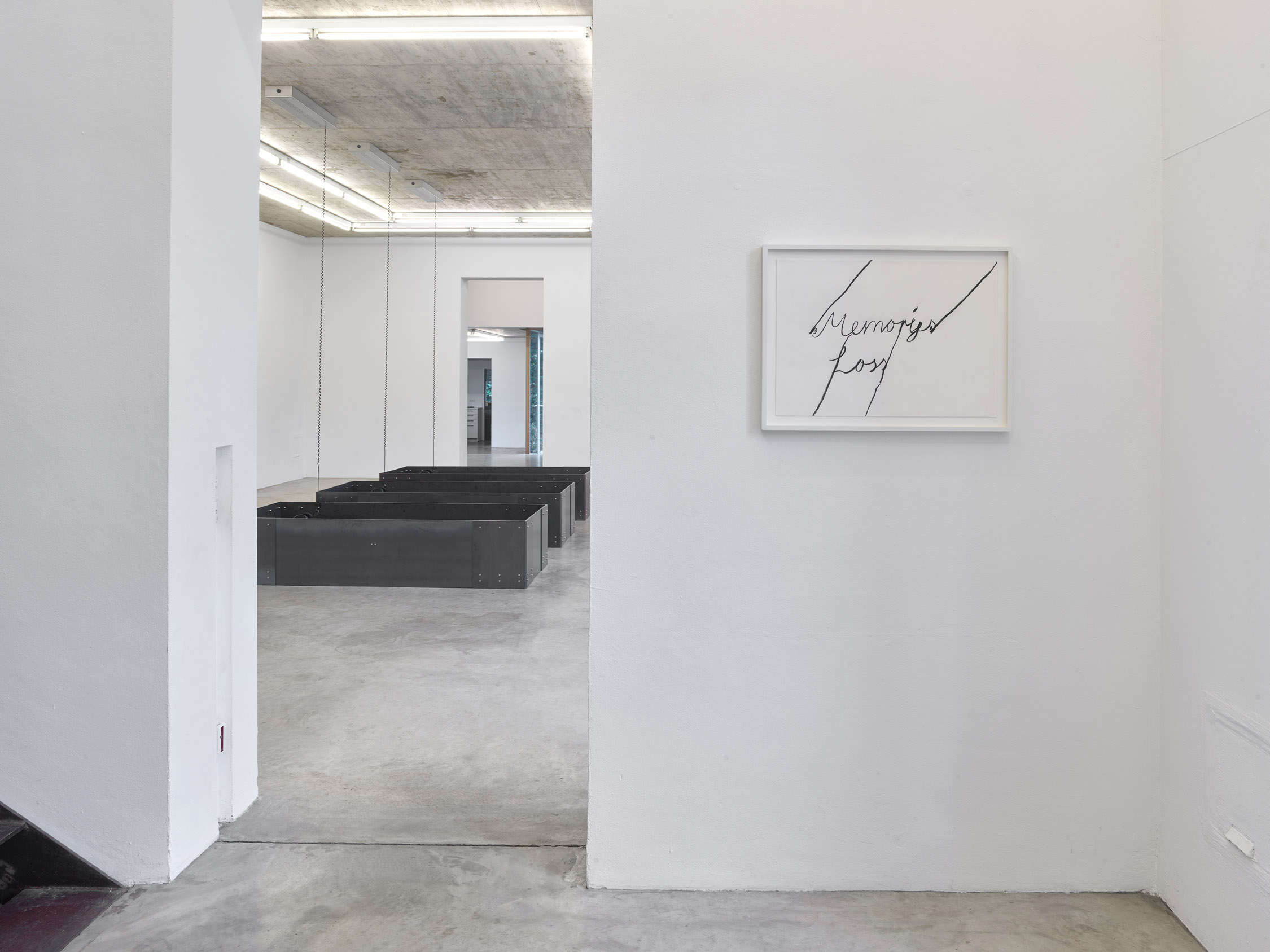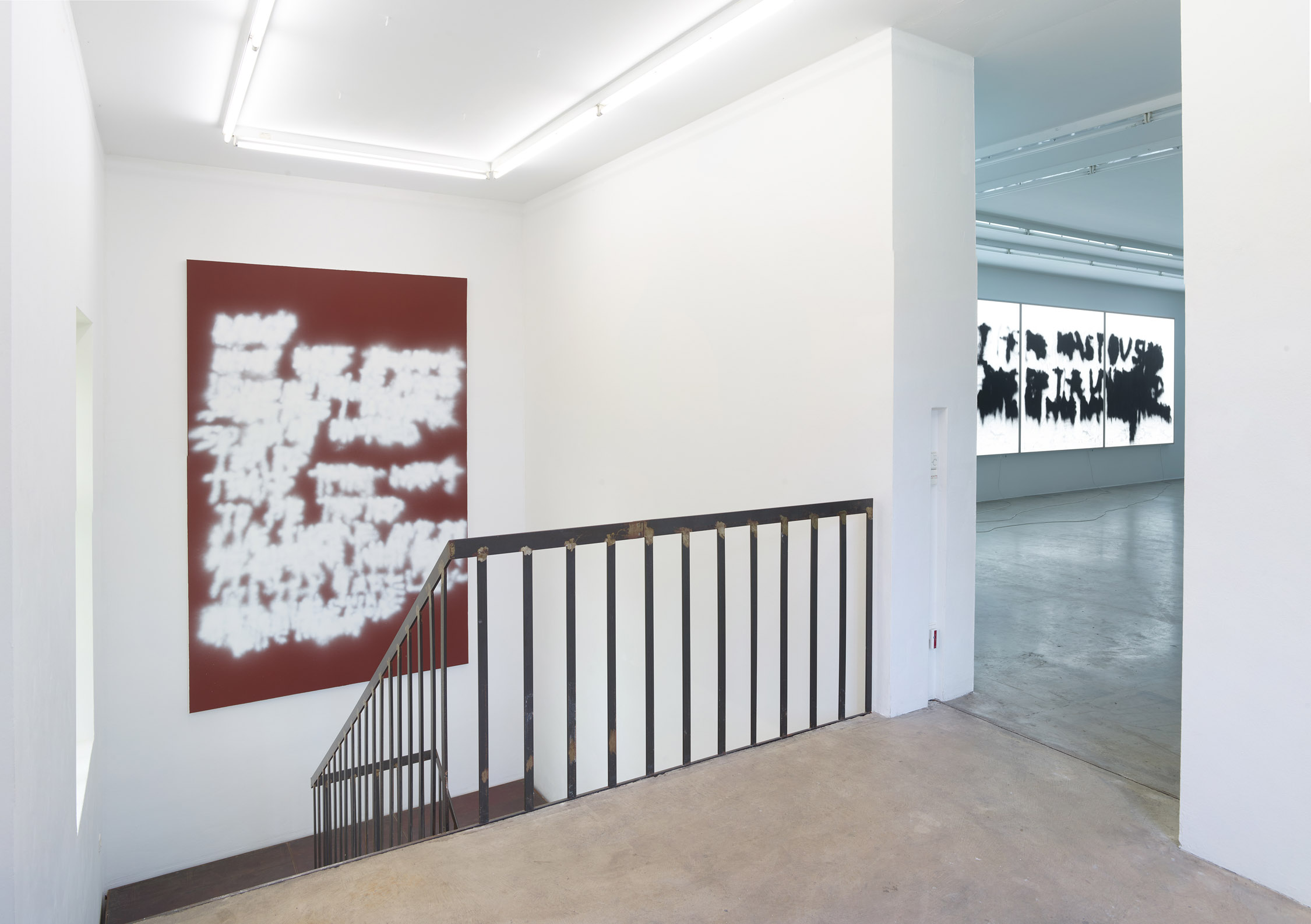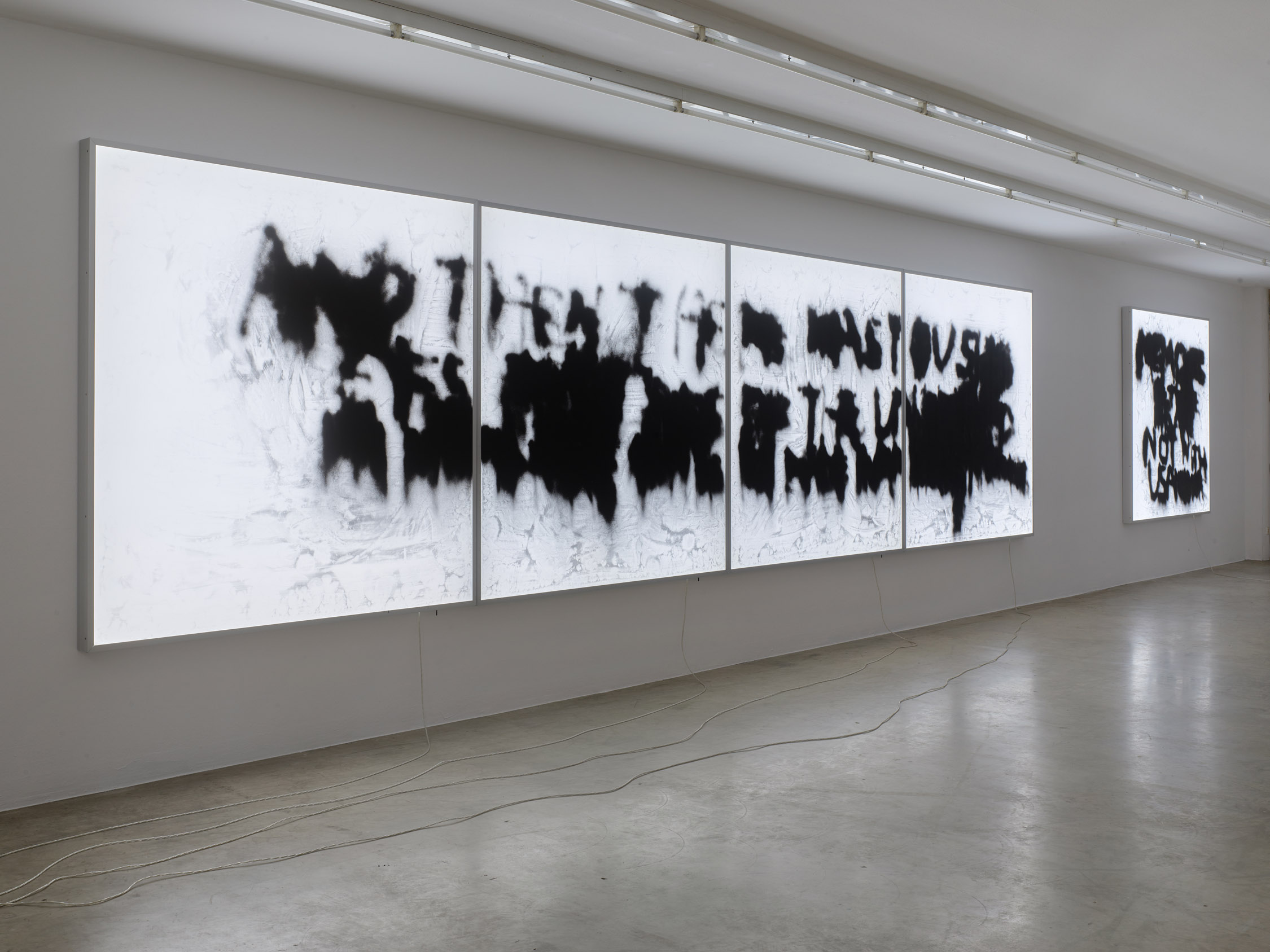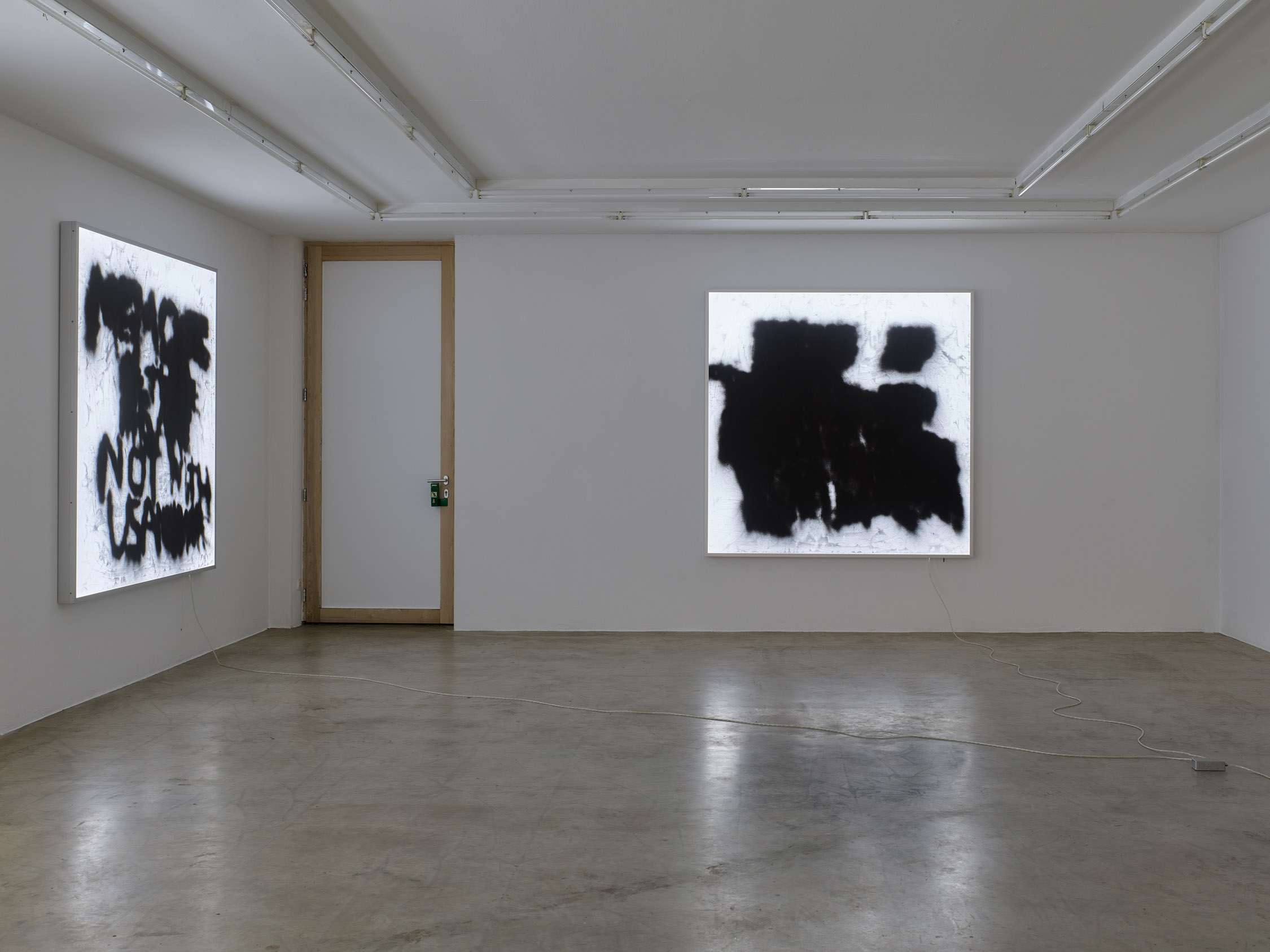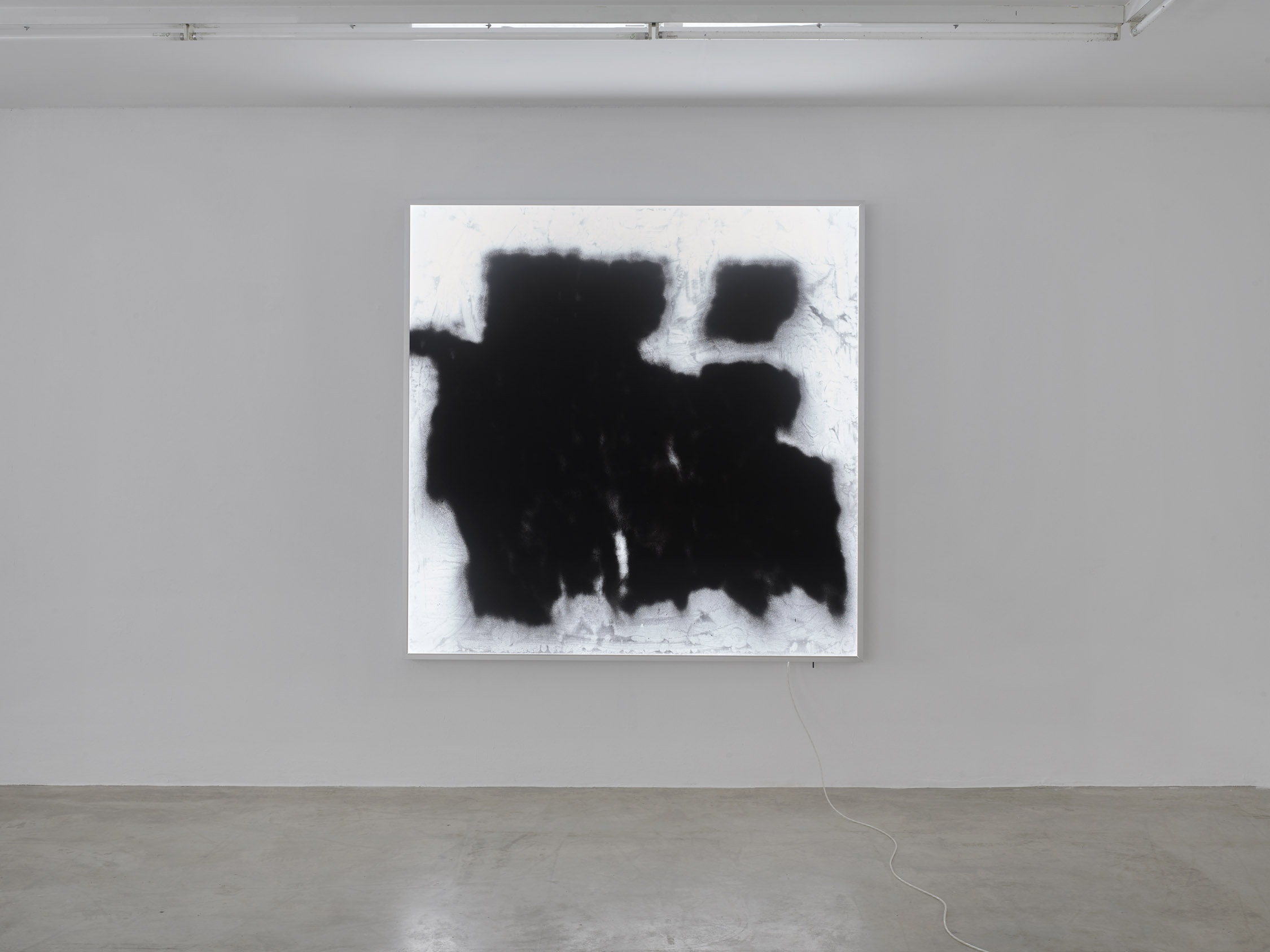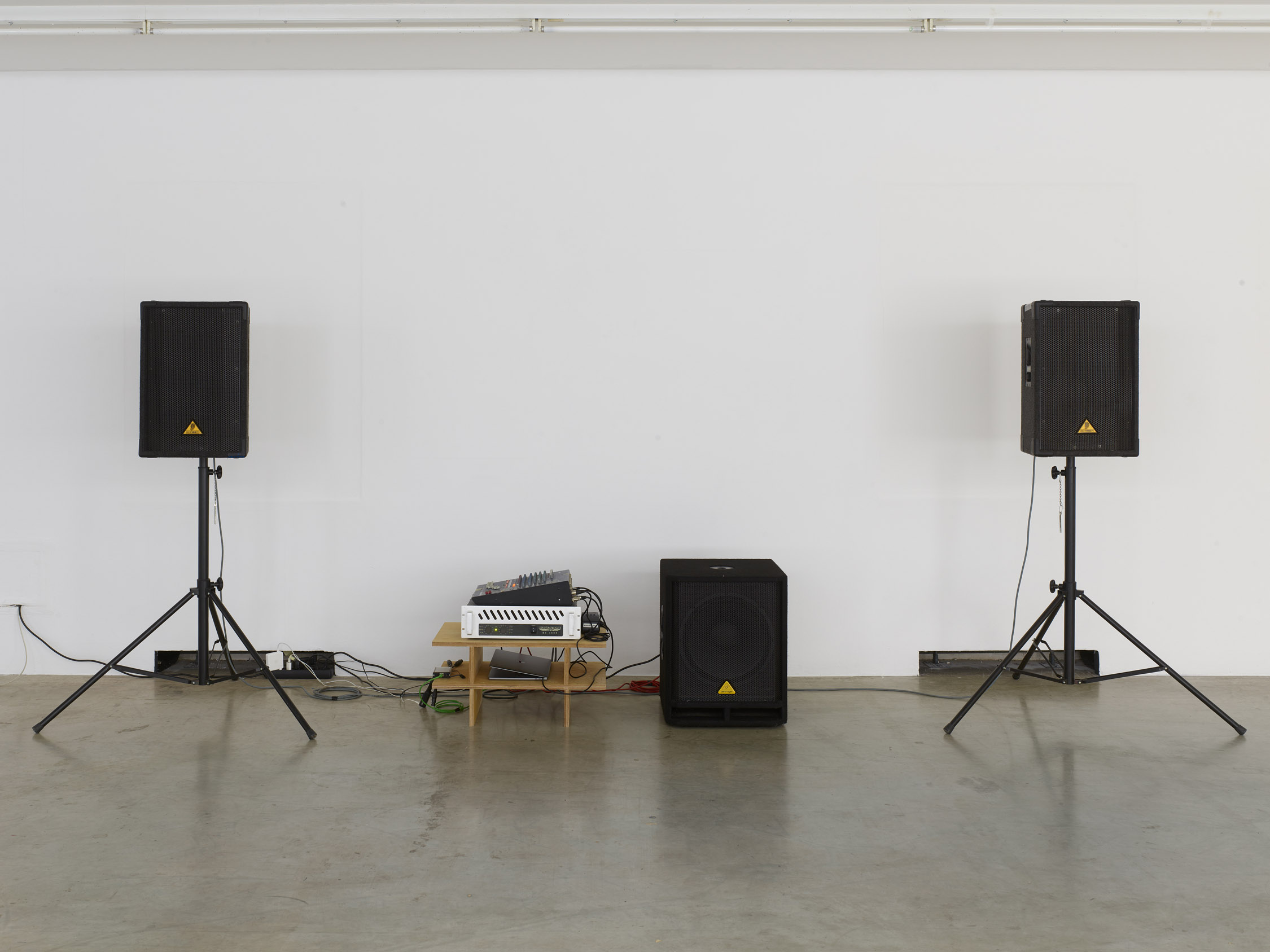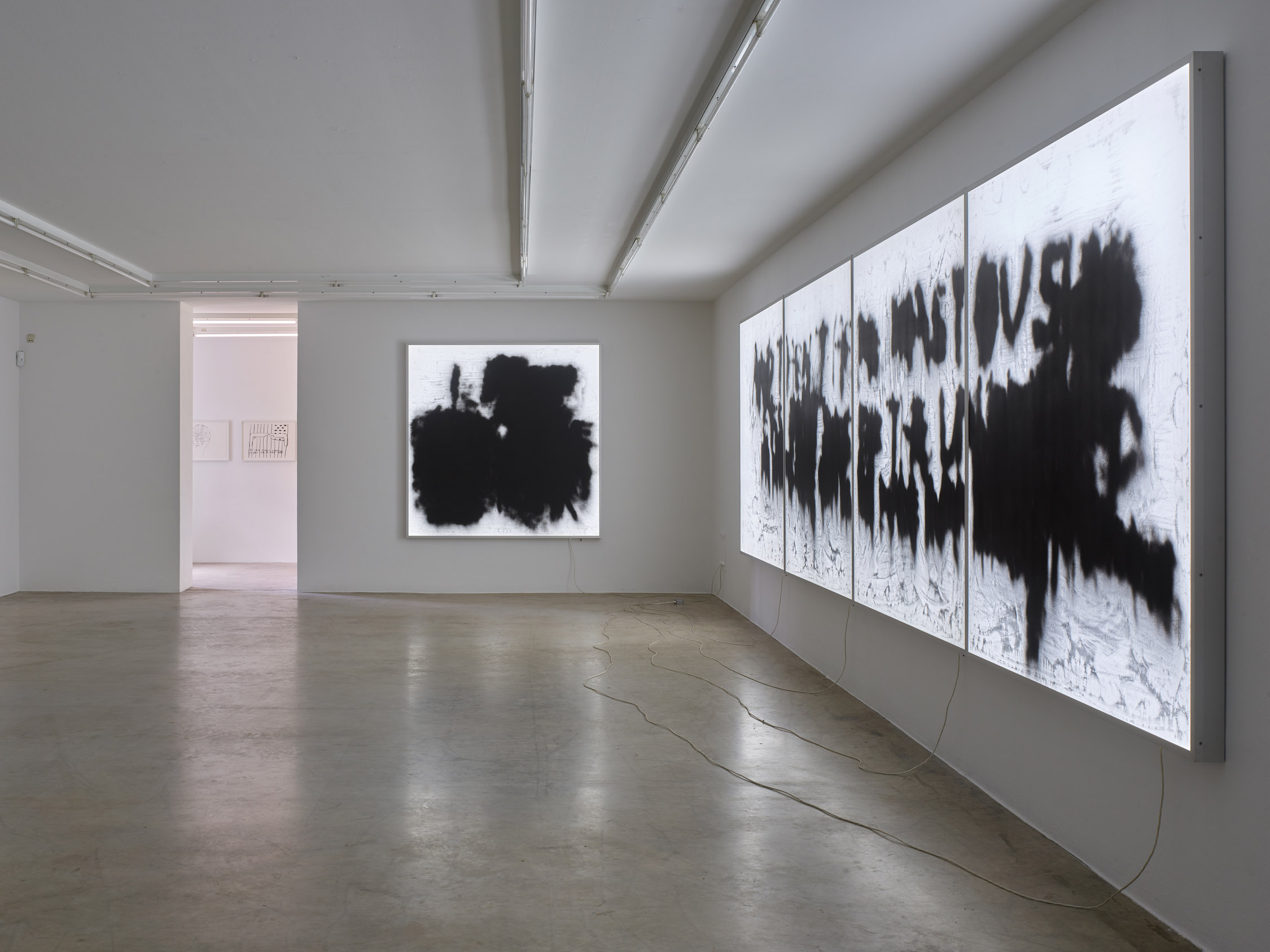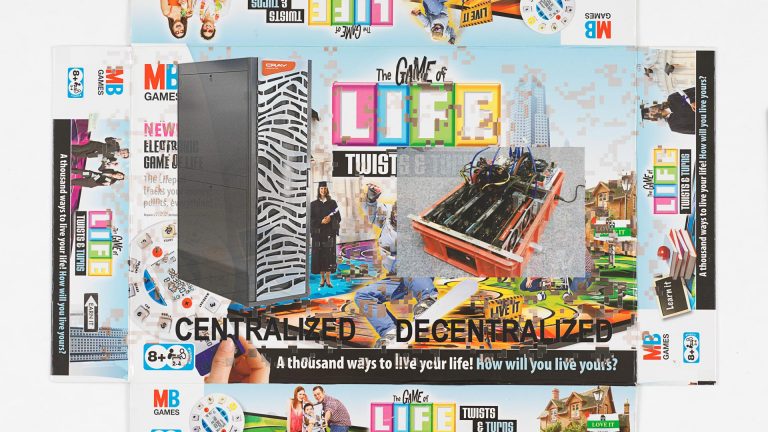Artist: Monty Richthofen
Exhibition title: THANK GOD GOD IS DEAD
Venue: NAK Neuer Aachener Kunstverein, Aachen, Germany
Date: April 7 – May 26, 2024
Photography: Simon Vogel / all images are copyrighted. Courtesy of the artist and NAK Neuer Aachener Kunstverein
In THANK GOD GOD IS DEAD, his upcoming first institutional solo exhibition, at NAK Neuer Aachener Kunstverein, Monty Richthofen invites visitors on a journey through the depths of consciousness. Born from the lines of his biography and shaped by the strata of global current affairs, his work not only strives to blur the boundaries between text and image, it also endeavors to lead the beholder into an introspective sphere in which death is seen not as taboo, but as an inescapable part of shared human existence. In 2022 Richthofen co-curated an extensive group exhibition at NAK on the subject of language.* Now he presents most recent works, including a new multimedia site-specific installation.
Three sarcophagi like capsules loom at the center of the first room, altering the beholders’ physical state and transporting them into a world of feeling and perception. Made of steel, they are symbols of mortality, while also providing a sheltered space for a contemplation of transience. Headphones hang from the ceiling on which a stern and uncompromising sound piece with Richthofen’s aphorisms plays.
The installation, from which the exhibition takes its title, an unmistakable Nietzsche send-up, is not just an homage to impermanence, but also a manifesto against the alienation from death in Western culture. Snippets of text — one might call them unholy mantras — permeate the body as the most immediate resonance chamber, encouraging the listener to grapple with the finitude of all existence. “Thank God consumerism is dead,” “Thank God religion is dead,” “Thank God God is dead,” phrases like these echo in what is also a reflection of the disruptions and upheavals of our time.
On the second floor, seven light boxes, again flanked by a sound piece, catch the visitor’s eye, showcasing text-based work. Covered with censored and overpainted passages, they are largely illegible, but this very opacity makes them powerful illustrations of the inconstancy of words and the unreliability of signifiers. However the obliterated textual fragments can be experienced on an acoustic level. As Richthofen himself postulates “light here becomes a bridge between painting and sound.” The two audio pieces presented in the exhibition, realized in collaboration with Yasmina Dexter (aka Pandora’s Jukebox), are based solely on the artist’s voice and writings.
In this poetic sphere, the idea of instituted death as a Foucauldian heterotopic space encounters the proclamations of Nietzsche’s “death of God” and the “death of the author” — who, it appears, survived his death, just as painting, too, ultimately survived. Space and time, past and present, life and death are fused in an infinite experience that touches the heart and elevates the soul. For Monty Richthofen’s exhibition unlocks the possibility of a perspective in which death is not the end but the beginning of a new insight, a new truth, one that awaits discovery.
Luisa Schlotterbeck, artistic director, Neue Galerie Gladbeck
Monty Richthofen (b. Munich, 1995), also known by his nom de plume Maison Hefner, studied performance art and design at Central Saint Martins University of the Arts, London. Since graduating in 2018, he has mounted a concerted challenge to conventional poetry through techniques such as the painterly visualization of texts, writing in public settings, and longhand tattooing. Richthofen lives and works in Berlin.

